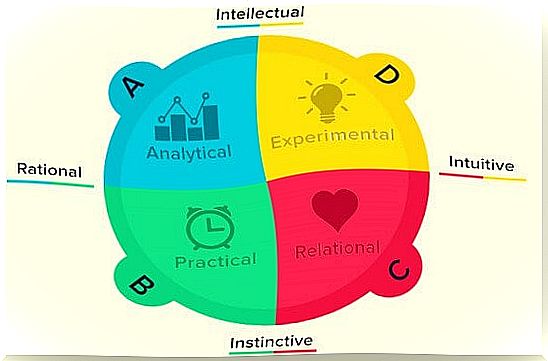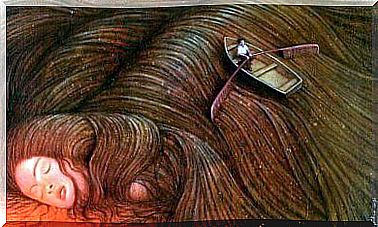Brain Dominance According To Herrmann’s Quadrants: What’s Yours?

The Herrmann Brain Dominance Test is a 120-question instrument used to find out how each person processes information and what their particular learning style is. Within this curious model, the brain has four quadrants. In general, we all have a certain predisposition to some of these typologies.
It is very possible that one of our readers has taken this test at some point. However, it must be said that it is not very common. The “Herrmann Brain Dominance Instrument” (HBDI) has no validity from a neurological point of view, and moreover , many scientists say it is part of what we often call “pop psychology.”
The subject of brain dominance and lateralization is very controversial. For example, this instrument explains that creativity is located exclusively in the right hemisphere. It is worth noting that this data is not entirely correct, since the creative processes, in reality, make use of the entire brain in a wonderful and sophisticated neuroactivity.
Does this mean that Herrmann’s brain dominance test is useless? No way. There is an aspect that makes it valuable and, therefore, it is recommended to bring it to our space. This test starts from an important premise: each person has a particular way of processing information, transforming it, inducing data, interpreting it.
This becomes very clear when we observe several students in the same room studying or even when we are working ourselves. There are those who are more meticulous, conservative, others are innovative, some are more visual and others process information better in an auditory or communicative way… All of this fits into the hypothesis that is handled in the Herrmann test, and this is the classification that it can offer us.

Brain dominance in the Herrmann test
Before talking about this instrument developed in the 90s, it is worth talking about its creator, Professor Ned Herrmann. He was president of the American Creativity Association and one of the pioneers in creative thinking and reasoning. Specialized in physics and music, he worked from an early age at General Electric with one goal: to improve employee production, motivation and creativity.
To do this, Mr. Herrmann analyzed the different styles of thinking and learning of all workers, thus creating a brain map. From there, he developed the cerebral quadrants theory to enunciate 4 typologies, four different ways in which people supposedly tend to learn, think, create, interact and understand reality.
This brain dominance is described as follows:
Type A: analytical people
Ned Herrmann called them experts. It is a profile characterized by a logical, analytical and more technical thinking style.
- They are very rational people who infer data from concrete facts.
- Analytical people tend to be more competitive and individualistic, as well as intelligent, ironic and with a great sense of humor.
- The activities most associated with this type of brain dominance are those related to mathematics, physics, engineering, chemistry…
Type B: the organizing style
As the word itself explains, we are faced with a kind of organized profile, loving of order and meticulousness.
- They don’t take any action without having planned before, they like everything that is predictable, conservative, and under their control.
- In general, in this quadrant can be company directors, managers, accountants…
Type C: the relational
Type C refers to the cerebral dominance that tends towards emotionality, the need to connect with others, to relate to enjoy social contact with which to feel useful, give and receive.
They are people who know how to communicate, who are spontaneous, extroverted, and who generally prefer jobs such as journalism, nursing, social work, law, etc.
Type D: the experimental
The fourth profile of this test on brain dominance refers to that personality characterized by a holistic mentality. They are visual profiles, spontaneous and highly creative.
These are people who like to experiment and innovate, although this has some associated risk. They always look to tomorrow, but try to learn from the present so that they can go further day after day.
Thus, the professions that usually include type D are architects, writers, musicians, painters, draftsmen, etc.
To conclude, having seen these four types of Herrmann brain dominance tests, it is possible that more than one person does not identify with a single area. It is common. In fact, estimates on the Herrmann Brain Dominance Instrument (HBDI) say that almost 60% of the population tends to have characteristics in more than one of these four areas.
Still, it is important to emphasize that no dominance is better than the other and that they neither determine nor predict anything. They only indicate what orientation we usually have when interacting with our surroundings, or our style to process the data that comes from it. This is just a simple way to get to know each other a little more.









